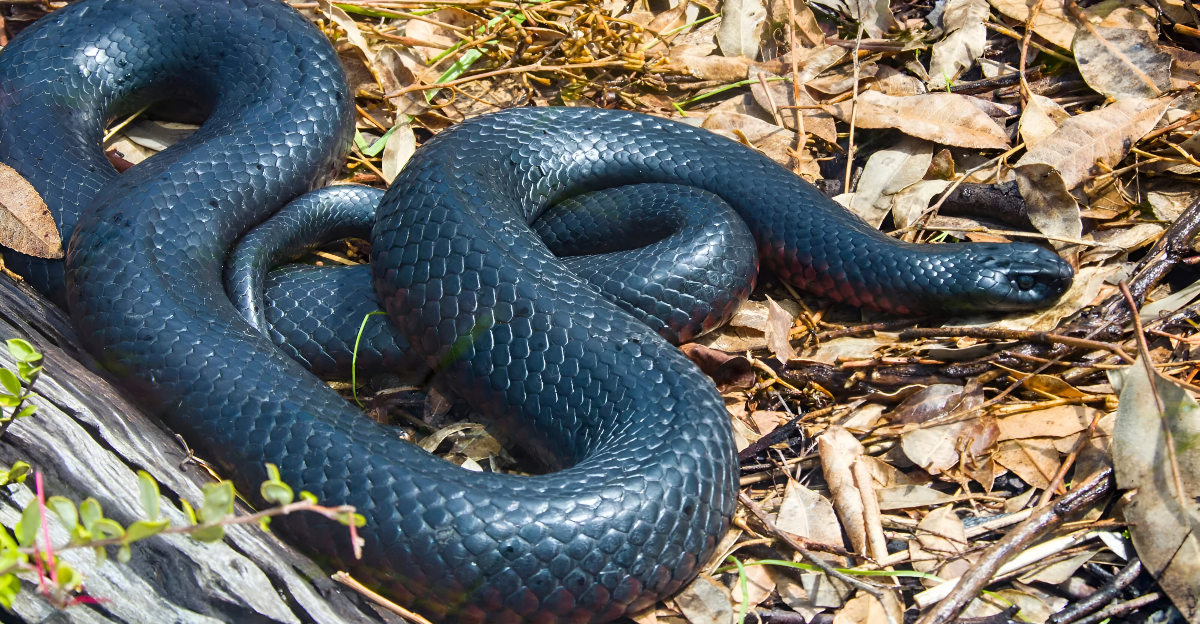
For some, finding black snakes in the U.S. can be intriguing, but for others, it is not. Here is a list of 11 black snakes that could be encountered, how dangerous they are, and a bonus on what to do if bitten by one!
1. Eastern Rat Snake
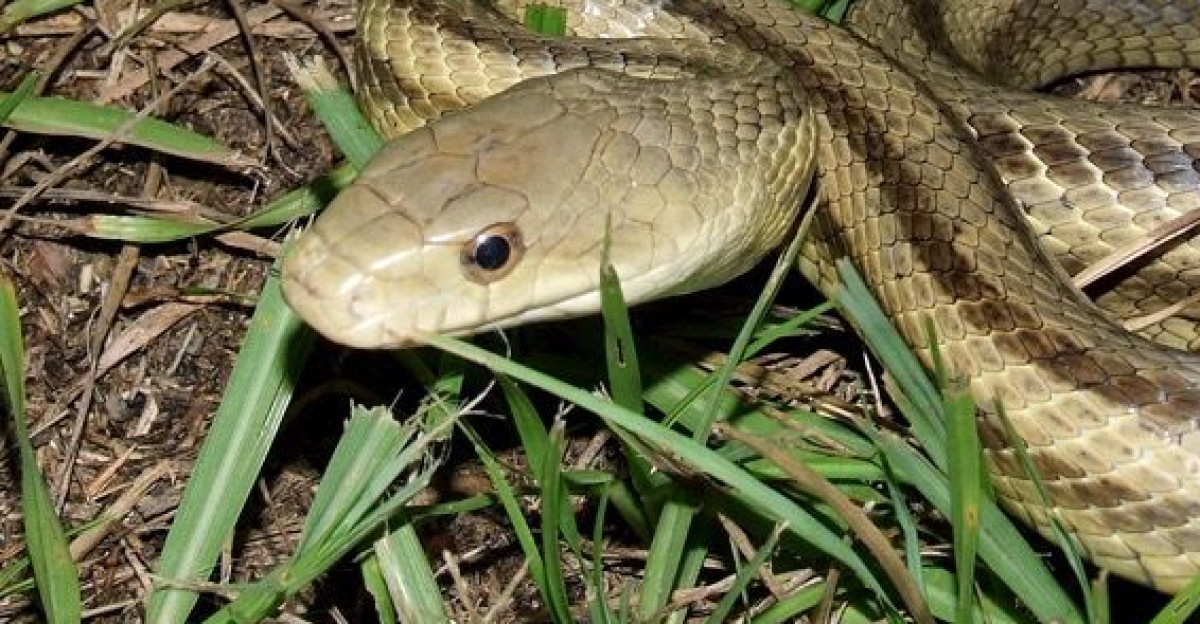
(Pantherophis alleghaniensis (formerly Elaphe obsoleta))
They are also known as the Black Rat Snake. This large constrictor snake (it kills its prey by coiling around and asphyxiating it) is a non-venomous snake that can grow up to 7.5 feet long. It is primarily black with a white chin and an almost checkerboard-like belly.
They can be found in woodlands and near urban areas, but don’t worry—they are harmless to humans and usually avoid confrontation. If you stumble upon one, keep your distance and don’t provoke it. They rarely bite you, but they are non-venomous. You can clean and monitor the wound for infection.
2. Southern Black Racer
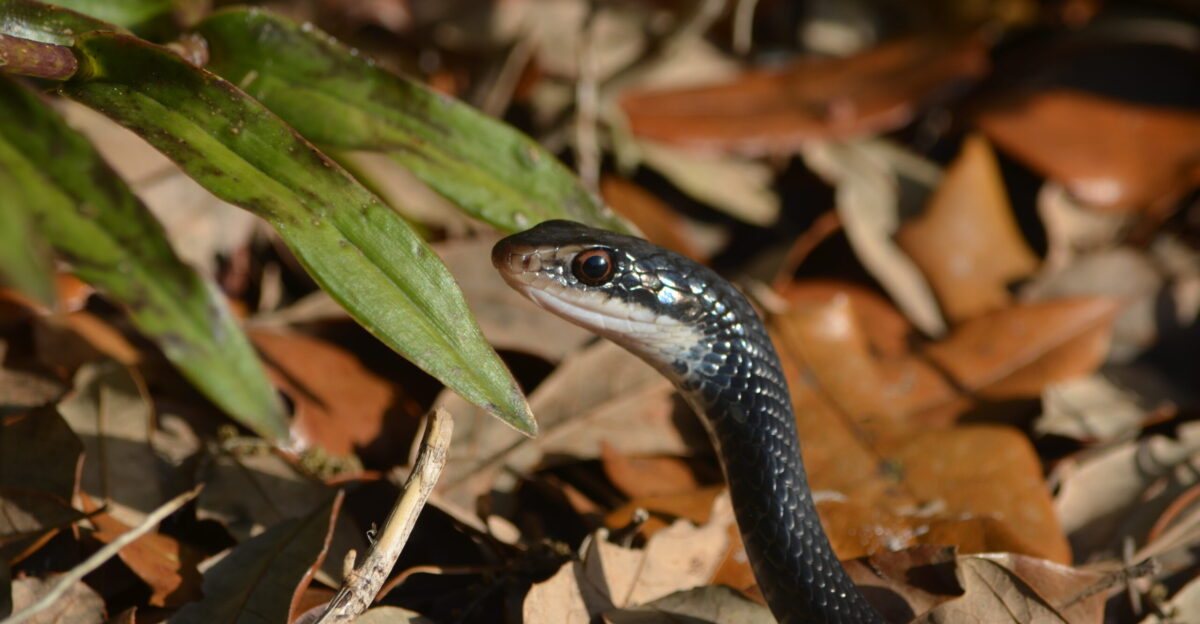
(Coluber constrictor priapus)
This is a thin, completely black snake commonly found in the southeastern U.S. It is also non-venomous and considered harmless; ordinarily, they will flee quickly when approached.
These snakes settle in forests and fields, and if bitten, they are not venomous, so you can disinfect the wound.
3. Black Swampsnake
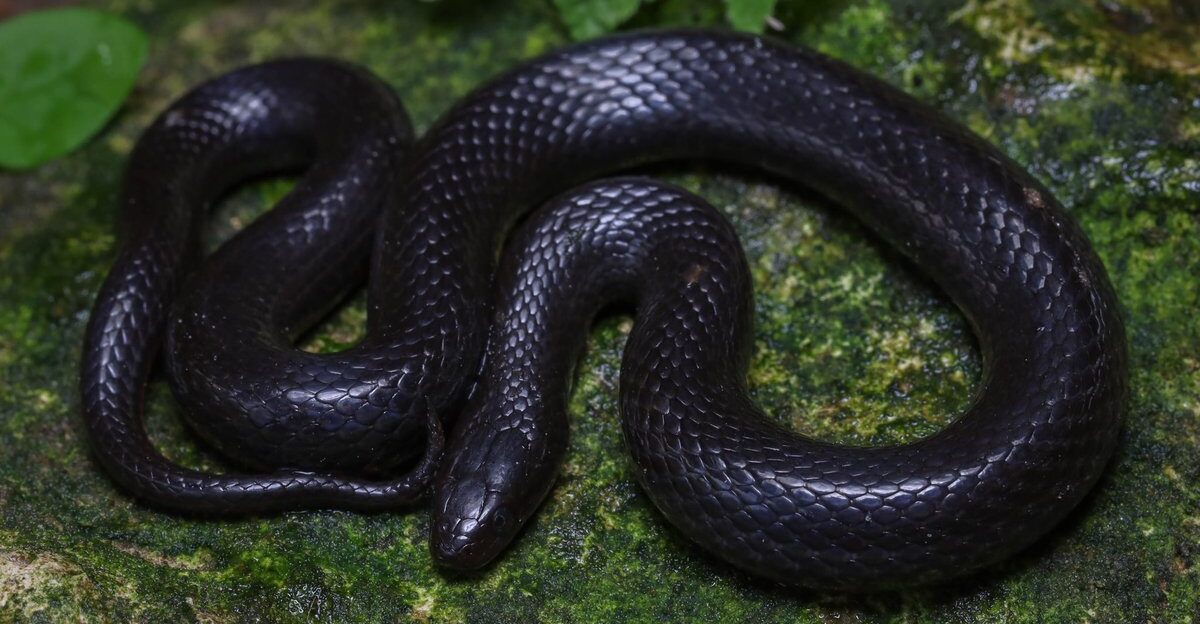
(Liodytes pygaea)
The Black Swampsnake is a small, glossy black snake that typically measures between 10 and 22 inches in length. This makes it one of the smaller snake species in its range. It can be found in wetlands and swamps in the Southeast.
This snake poses no threat to humans as it is non-venomous and not aggressive, but it should still be observed from a safe distance. If this tiny snake were to bite you, you could expect some discomfort, such as slight pain, redness, or swelling at the bite site, but rest assured, it is non-toxic.
4. Eastern Indigo Snake
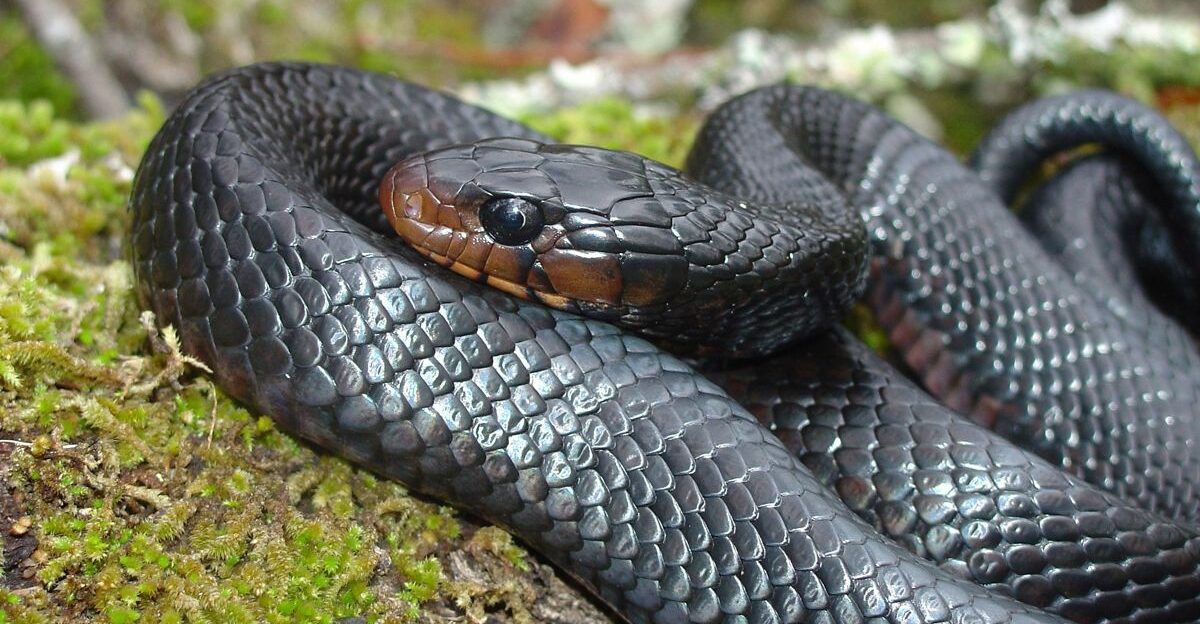
(Drymarchon couperi)
This is a large, glossy black snake with an indistinct blue shimmer. It can grow up to 8 feet and is non-venomous, but it has an added benefit: It preys on venomous snakes!
They are typically found in forests and scrublands in the Southeast. The Eastern Indigo Snake is not aggressive, but if bitten, you can clean the wound and keep an eye on it.
5. Black Pinesnake
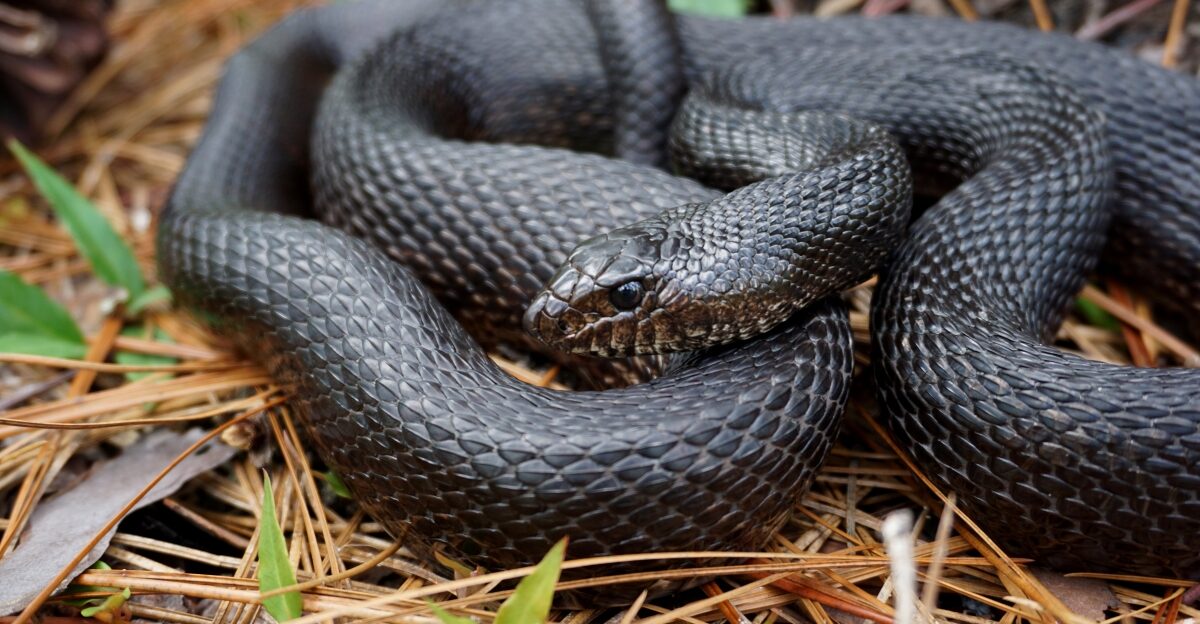
(Pituophis melanoleucus lodingi)
The Black Pinesnake is a large black snake that is, on average, about 6 feet long; the longest found to date was 7 feet. It inhabits pine forests in the Southeast.
These snakes mainly feed on small mammals and have adapted to burrowing, allowing them to hunt in tunnels or burrows. Although it is a non-venomous snake and harmless to humans, it is recommended not to disturb this snake. However, you can treat the wound as a simple injury if you are bitten.
6. Western Diamondback Rattlesnake
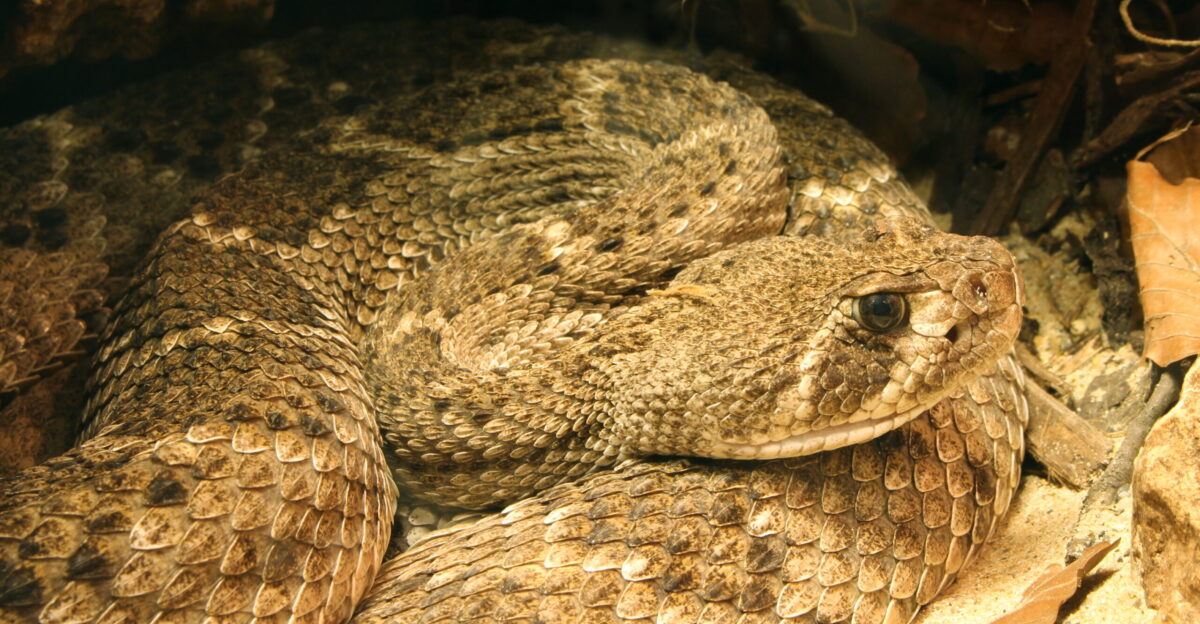
(Crotalus atrox)
Here is our first venomous snake for the day! The Western Diamondback Rattlesnake is venomous and has a distinct rattle tail with diamond-shaped patterns. It can grow up to 7 feet and is usually found in deserts and grasslands from Arkansas to California.
Keep your distance if you encounter the Western Diamondback Rattlesnake or hear the rattle. The snake’s venom is toxic and can lead to serious medical complications, so if bitten, you should seek medical attention immediately. Symptoms from the bite can include intense pain, swelling, nausea, and dizziness.
7. Black-Tailed Rattlesnake
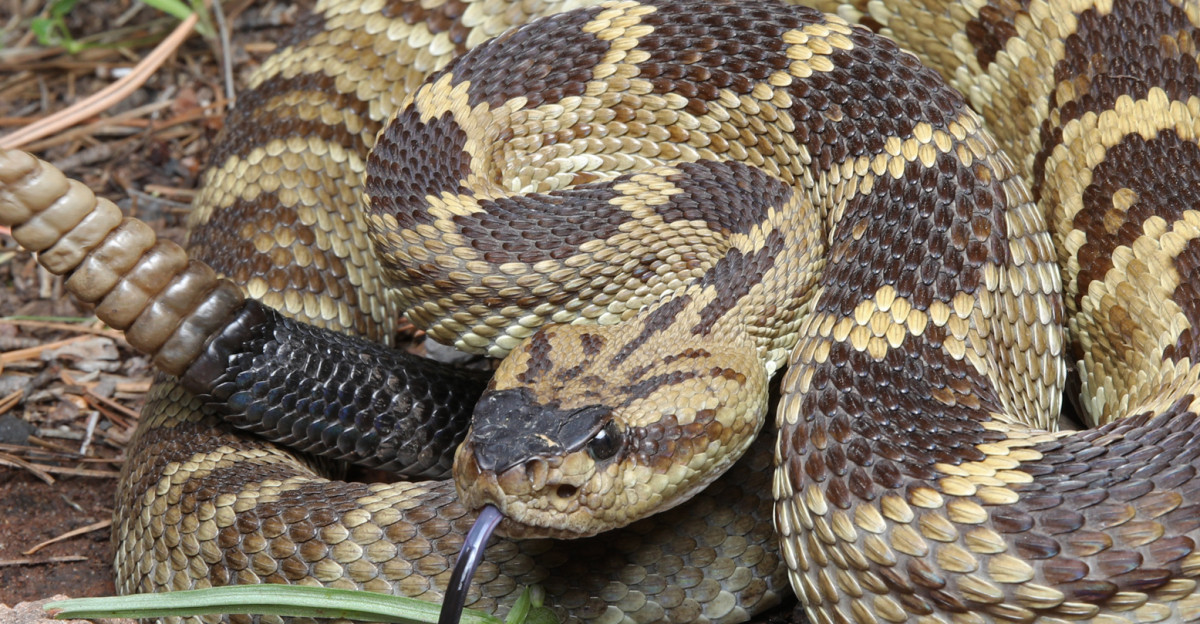
(Crotalus molossus)
Here is another venomous snake usually found in the southwestern U.S. deserts: the black-tailed rattlesnake. It has a dark body with an irregular blotch pattern, and its colors can vary from olive-gray to yellowish or brownish tones. The snake also has a very distinct black tail and rattle at the end.
The average adult can measure up to 3 feet and mainly prey on small mammals like squirrels and rabbits. These snakes pose a high danger level, and you must seek urgent medical care if bitten. You can expect symptoms like swelling, pain, and systemic effects.
8. Cottonmouth
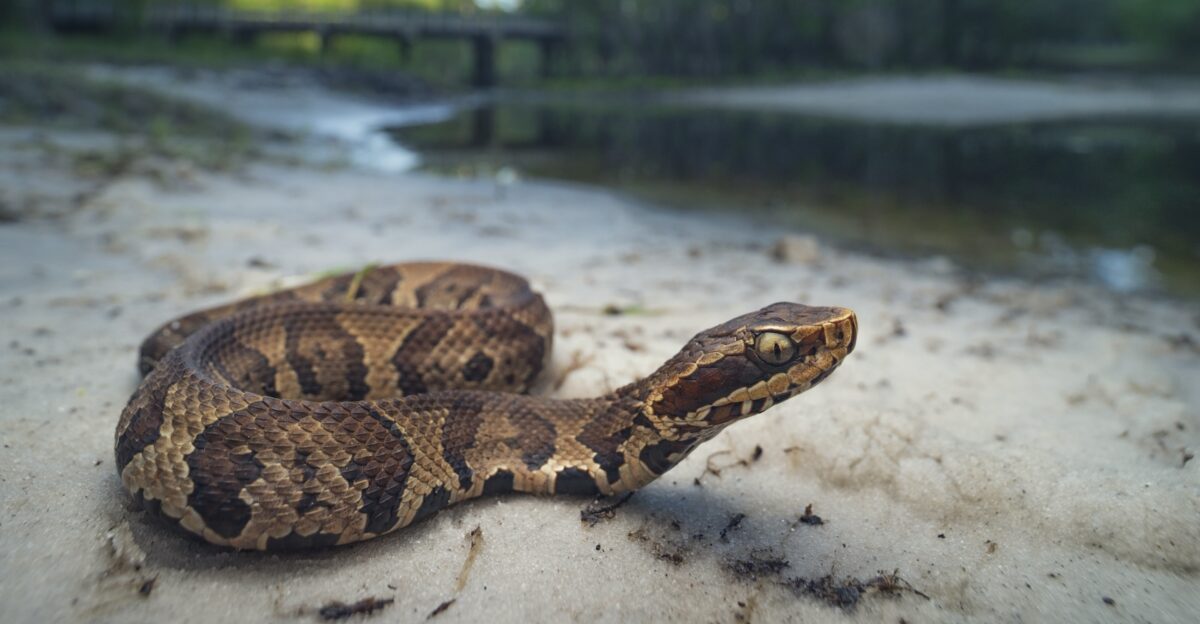
(Agkistrodon piscivorus)
The cottonmouth snake, also known as a Water Moccasin, is a venomous snake that usually lives near water bodies in the Southeast. The name cottonmouth was given because when threatened or feeling defensive, this snake will open and show the inside of its mouth, revealing a white, cotton-like lining.
They can grow over a foot long and have a dark brown to black body with crossbands. These snakes are known for being defensive and aggressive. If bitten, their venom can cause severe pain and tissue damage. It is recommended that medical care be sought immediately after being bitten.
9. Northern Black Racer
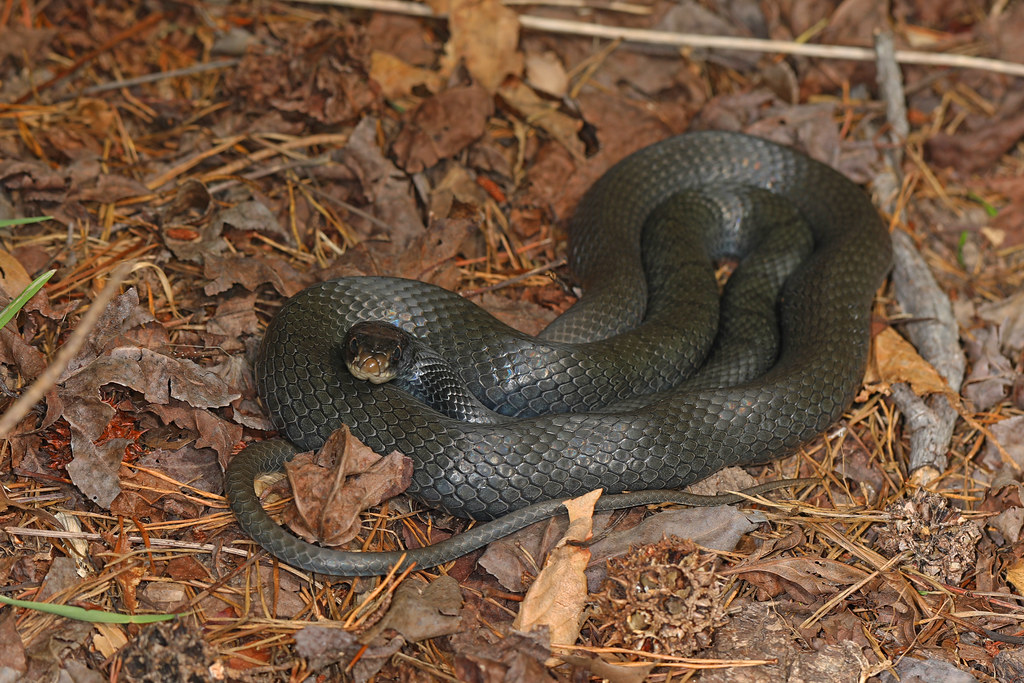
(Coluber constrictor constrictor)
This pitch-black snake is also found in the Eastern United States. It is non-venomous and has a slim body measuring up to 5 feet.
Although these snakes are fast, you can rest assured that they are not aggressive and will usually flee when encountered. Their bites are non-venomous, so that the wound can be cleaned and monitored.
10. Ring-necked Snake
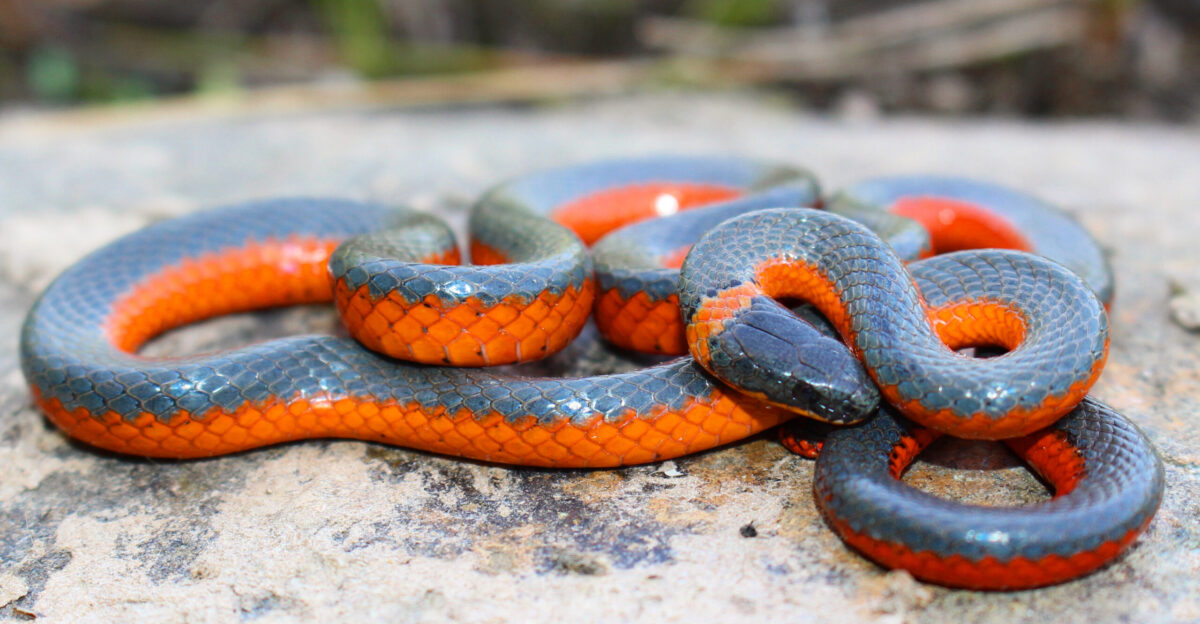
(Diadophis punctatus)
These small and slender snakes are often black with a definite yellow or white ring around their neck. They usually grow between 10 and 15 inches and are also non-venomous.
The Ring-necked snake lives in woodlands and rocky areas across the U.S. They rarely bite people and are known not to be aggressive, but if bitten, the bite would be minor and non-toxic.
11. Black Rat Snake
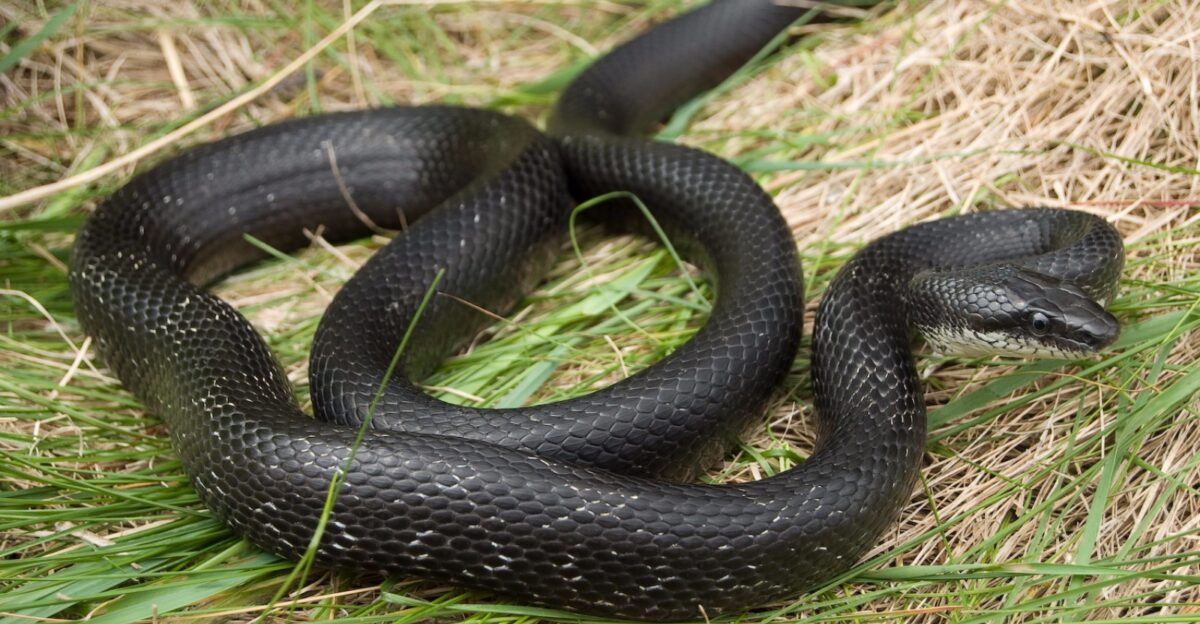
(Pantherophis alleghaniensis)
This snake gets its name from its diet. It often preys on rats and rodents. However, it is also known by other names, such as Black Snake or Chicken Snake, because of its color and the likelihood of being around chicken coops.
These snakes are non-venomous and can be quite beneficial in controlling rodents. They are known to be non-aggressive, and their bites are non-toxic.







